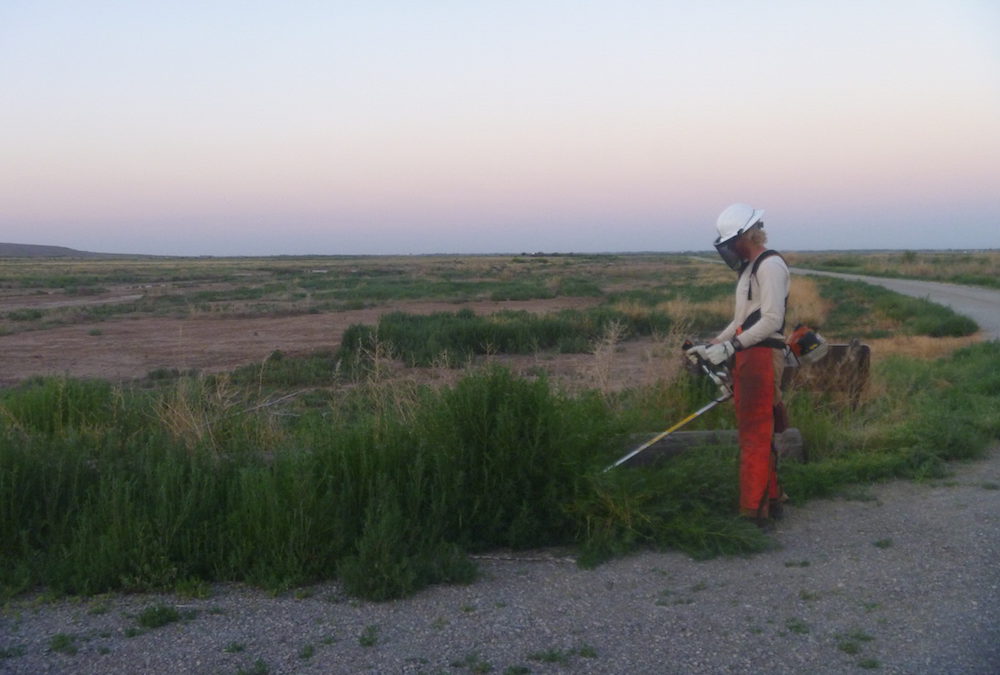A crew of 6 just finished a month long hitch doing restoration work at the Bitter Lake National Wildlife Refuge. The Bitter Lake Refuge sits above an aquifer, running down from the Capitan Mountains to the west of Roswell NM, and eventually feeds into the Pecos River. ACE Corps member Peter Schaffer was part of the project and shared his experiences of the project.
Being monsoon season in the south west, the crew would watch storms form over the solitary peak outside of Roswell. Sadly, the rain rarely reached the refuge to cool the crew. However even though the rain was not always there to cool the crew, they did get to witness firsthand how the water falling in the northern range would be absorbed into the system, before being pushed up towards the surface forming brackish sinkholes and leached through spring-like vents and feeding creeks and rivers throughout the refuge. ACE Corps member Peter Schaffer stated that this refuge is “truly an unsuspecting place, and, as the refuge’s visitor center tour heavily emphasized, it really is an oasis in the desert. It may seem cliche, but a closer examination of the geographical properties of this place helped put this project’s importance in perspective for me.”
The ACE crew worked with US Fish and Wildlife (USFWS) refuge staff on many of the projects and began to understand how complex restoration work is. Peter explained: “Bitter Lake struck me as a great demonstration of how uniquely balanced the desert (or any ecosystem for that matter) can be for creating a plethora of life that has evolved in congruence with the terrain. The flora in the area love the brackish water; the bugs certainly don’t mind either. There are 5 endangered species on the [Bitter Lake] refuge, most of which live in and around these vents and sinkholes. They are dependent on the land and water with which they are so uniquely intertwined, and ACE’s efforts in the past few years have been within these areas, which had been heavily affected by invasive flora. While I have worked on other restoration projects that were in the early or middle stages of treatment, I began to see how this multi-year process of hard work can pay off in truly restoring and balancing these incredibly unique area around the refuge.”
During the final days of the project, Corps members were able to plant native grasses along one of the creeks, and within the next year or two these species to proliferate. “It’s a good example of that tortoise/hare (or jack-rabbit) mentality, which has been hard for me to learn how to accomplish and improve upon while being in ACE. It seems that good restoration work requires an innately slow, careful touch in order to be successful. Missing a plant that can pollinate and spread seed over an area means that the end goal gets pushed back further. Treating ten miles of river in a day may sound good on a project report, but it may mean that the true goal of these kinds of projects was missed. I could see how ACE had fulfilled that necessity at Bitter Lake, and I hope that our crew continued in producing that high quality of work and diligence”, Peter added.
Thanks to the crew for their hard work on the project, and to Peter for taking the time to share his experiences.


